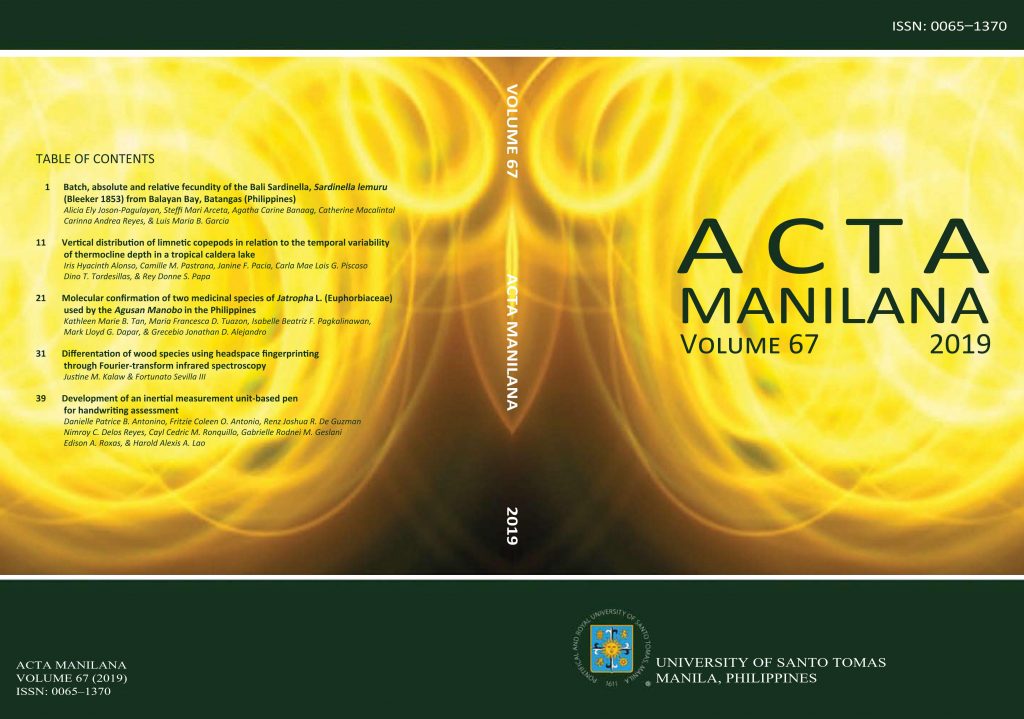
VOLUME 67 : 2019
Vertical distribution of limnetic copepods in relation to the temporal variability of thermocline depth in a tropical caldera lake
PAGE 11-19
Iris Hyacinth Alonso, Camille M. Pastrana, Janine F. Pacia, Carla Mae Lois G. Piscoso, Dino T. Tordesillas, & Rey Donne S. Papa
ARTICLE DOI: https://doi.org/10.53603/actamanil.67.2019.hpph6899
Sardinella lemuru (Bleeker 1853) is a tropical species found in coastal areas. In the Philippines, it is abundantly caught in marine areas like those in Balayan Bay, Batangas. The increasing demand for the species has led to previous reports on the decrease in the annual fish stock [1]. Knowledge on the reproductive biology of the fish, such as fecundity, is important to determine the status of the fishery stock and help in the proper management of the fishery resource. In the present work, fecundity estimates of 42 gravid ovaries from female fish samples (mean total length of 152 mm; mean eviscerated weight of 28.4 g) were conducted. Absolute fecundity ranged from 4,507 to 43,733 eggs while batch fecundity was in the range of 1,035–25,560 eggs. The relationships of fecundity (absolute and batch) to both body length and body weight using linear correlation indicates that absolute fecundity show a moderate correlation with both fish length (r2 = 0.326) and fish weight (r2 = 0.290). A similar trend was observed with batch fecundity versus length (r2 = 0.248) and that versus weight (r2 = 0.230). The data on relative fecundity estimates reveal a range of 95–1262 eggs/fish (mean = 486 +/– 225). The high gonadosomatic index (GSI) observed indicate that the spawning period of S. lemuru occurs from the months of November to February, peaking in December and January. Ovarian samples representing mature to gravid conditions reveal different stages of vitellogenic oocytes. This continuous development of yolky cells that will be eventually spawned suggests that S. lemuru exhibits an indeterminate annual fecundity.
FOLLOW US
-
Research Center for the Natural and Applied Sciences
Thomas Aquinas Research Complex Building
University of Santo Tomas España, 1015 Manila, Philippines -
TL: (+63 2) 3406-1611 local 4037
DL: (+63 2) 8731-4031 - actamanilana@ust.edu.ph

© 2021 University of Santo Tomas, Acta Manilana. All rights reserved
Powered by: Communications Bureau
